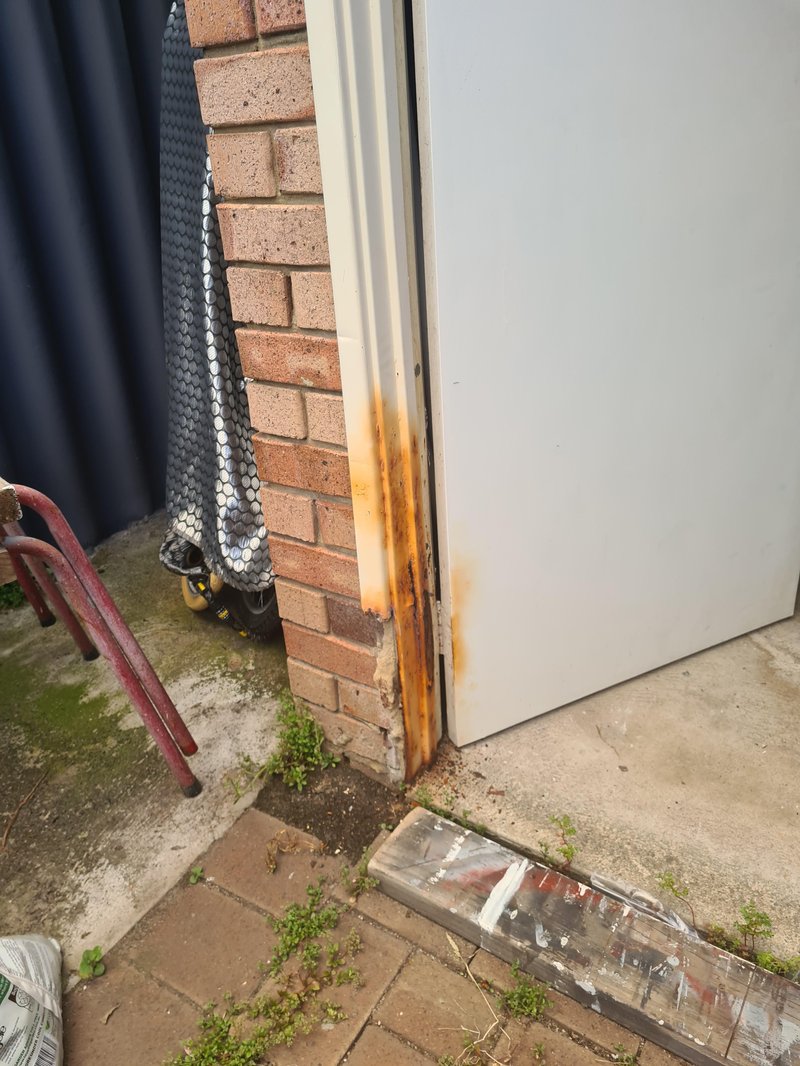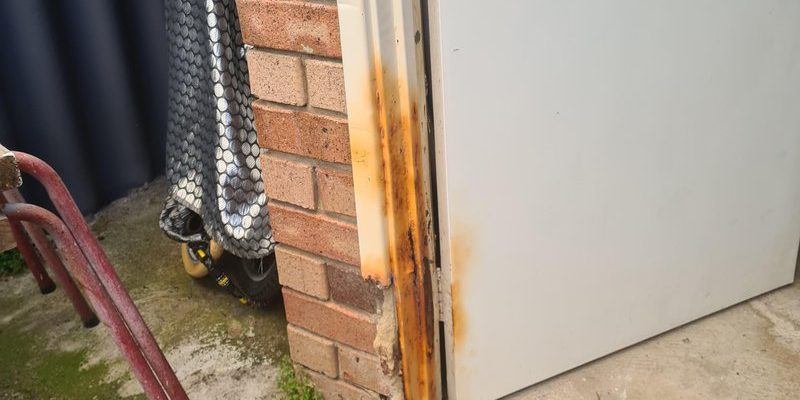
Let’s be real: most people think of doors as solid, dependable things—swing open, swing shut, end of story. But much like a remote that suddenly won’t sync with your TV, a door’s performance depends on all the parts working together tightly. When the frame loosens, everything from the latch to the weather seal can start failing. So, what’s really going on with that drafty door, and how do you fix it for good? Let’s break it down step by step, no jargon or shortcuts.
Spotting Signs of a Loose Door Frame
Here’s the thing: a drafty door isn’t always obvious. Sometimes the signs sneak up on you, especially if you’re used to the quirks of an old house. But if you pay attention, there are a few classic clues that point to a loose door frame.
- Visible gaps: If you stand inside during daylight and see sunlight peeking around the edges of your closed door, that’s a dead giveaway.
- Difficulty latching: Doors that are tough to lock or latch typically aren’t sitting right in the frame, allowing air and, sometimes, critters to slide through.
- Movement when pushed: If the door wiggles or the frame gives when you apply light pressure, something has definitely shifted.
- Draft tests: Hold the back of your hand around the edges of your door on a windy day. Feeling cold air? That’s the draft you’re troubleshooting.
Honestly, sometimes what looks like a problem with the door itself—like a stubborn lock or scuffed threshold—is really caused by the frame not holding steady. Catch these signs early, and you’ll save yourself a lot of headache (and probably a few dollars on your heating bill).
Why a Loose Door Frame Causes Drafts
You might be wondering why such a small shift can create such a big problem. Here’s the simple answer: doors rely on their frames for everything. If the frame loosens—even by a few millimeters—you lose that tight, weather-resistant seal that’s supposed to keep the outside *out*.
Think of your door frame as the charger cable for your remote. If the cable is wobbly in the port, your remote might not charge or sync properly. The same goes for doors—a loose frame stops things from connecting the way they should.
Let me explain how this plays out:
- Gaps form: As the frame shifts, tiny gaps open up along the door edges. It doesn’t matter how new or high-tech your weatherstripping is; air will always find a way in.
- Hardware misalignment: Latches, deadbolts, and even door handles can stop lining up with their receiving ends if the frame moves. That means less security and more drafts.
- Makeshift fixes fail: People often try to “fix” a draft by adding thicker weatherstripping or a door sweep. But if the frame is loose, these quick fixes barely make a dent.
In short, you can troubleshoot every part of the door, but until you tighten up that frame, the drafts will stick around.
Common Causes of a Loose Door Frame
Now for the root of the issue: what actually causes a door frame to come loose? In most homes, it’s a slow build-up—little problems adding up over time.
- Settling foundations: Houses shift naturally as they age, thanks to gravity, moisture, and temperature changes. This can pull the door frame out of alignment.
- Moisture damage: Water intrusion, especially around older doors, can swell or shrink the wood, making the frame less stable.
- Poor installation: If the frame wasn’t anchored tightly when installed—think loose screws, missing shims, or a rushed job—it can start wiggling free sooner than you’d expect.
- Everyday wear and tear: Slamming the door, hanging heavy items, or simply lots of use can work fasteners loose over time.
Here’s a quick story: my own front door felt drafty every winter. Turns out, after years of heavy use (and a few accidental kicks while juggling groceries), the bottom hinge screws had started pulling out of the jam. Once I fixed that, the draft vanished.
Pro tip: Diagnosing what’s behind the loose frame is half the battle. Sometimes the fix is simple—other times, you’ll need to address bigger structural issues.
How to Confirm You’re Dealing With a Loose Door Frame
Before you grab your toolkit, it’s smart to double-check what’s really causing the draft. Here’s how to troubleshoot and make sure your door frame is the culprit.
- Check for movement: Open the door wide and try gently rocking the frame itself—not just the door. If the frame wiggles or the trim seems loose, you’ve found your problem.
- Inspect the hinges and latch: Loose or wobbly hinges can let the door sag, making it hard to close fully. Look for screws that have pulled out or shifted.
- Look for separation: Peek between the frame and the wall. If you see gaps, cracked caulk, or shifting trim, that’s evidence the frame isn’t tight.
- Test the fit: Close the door and slide a piece of paper around the edge. If it slips in and out easily in spots, there’s too much space.
You don’t need fancy tools for any of this—a flashlight and some patience will do the trick. Just go slow. A little careful troubleshooting now will save you a lot of second-guessing later.
Step-By-Step Fixes for a Loose Door Frame Draft
Ready to stop that chilly draft for good? Here’s how to fix a loose door frame—one step at a time.
Tighten Screws and Hinges
- Check every screw: Use a screwdriver to snug up all hinge, latch, and strike plate screws. If a screw just spins, replace it with a longer one to bite deeper into the wood. I’ve seen a single long screw firm up an entire loose hinge in seconds.
Add or Replace Shims
- Inspect shims: With the trim gently removed, look for wooden shims wedged between the frame and the wall. If shims are missing or too loose, tap new ones in with a hammer.
- Check level: Use a level to make sure the frame isn’t leaning. Adjust shims as needed to straighten things out.
Seal Gaps and Re-Caulk
- Caulk around the frame: Once everything feels tight and even, run a bead of exterior-grade caulk around the outside of the frame, filling any gaps where drafts might sneak in.
- Reinstall trim: Nail the trim back in place gently, then caulk the seams for a clean, airtight finish.
Reattach or Replace Weatherstripping
- Check for damage: After securing the frame, inspect your weatherstripping. If it’s torn or flattened, swap it out for a fresh strip.
- Test the seal: Close the door and see if the weatherstripping compresses evenly all around. If not, adjust as needed until you get a snug fit.
Fixing a loose frame can feel intimidating, but honestly, most people can tackle these repairs in a weekend—with a little patience and a few basic tools.
Extra Troubleshooting Tips for Tricky Drafts
Sometimes you do everything right and there’s still a breeze. Here’s what to try next if the standard fixes don’t solve the drafty door problem.
- Look at the threshold: If there’s a gap at the bottom, your threshold might be the real issue. Many thresholds are adjustable—turn the screws to raise or lower it for a tighter fit.
- Inspect for hidden rot: Wood rot near the frame or sill can keep things from tightening up, no matter how much you tweak. If you see soft, spongy wood, you may need to replace sections of the frame.
- Check door alignment: Stand back and look at the spacing around the door. If it isn’t even, the door itself may be warped. Sometimes, a universal casein foam weatherstripping can help fill more irregular gaps temporarily.
- Investigate nearby windows: Sometimes what feels like a draft from the door is actually coming from a leaky window or wall nearby. Double-check before you rip your frame apart.
Insight: If you’ve tried everything and the frame still moves, it could be a sign of a bigger foundation or moisture problem. In that case, don’t hesitate to call in a pro for a deeper assessment.
Comparing DIY vs. Professional Door Frame Repair
Honestly, not all drafty doors require calling for backup. But if you’re still on the fence about tackling a loose door frame yourself, here’s a realistic look at your options.
- DIY fixes: Most loose frames just need some tightening, shimming, and sealing—all doable with simple tools and a bit of care. The process isn’t much harder than pairing a TV remote or swapping out batteries: go slow, follow the steps, and double-check your work.
- Professional help: If you spot signs of rot, severe frame shifting, or structural issues, a pro can diagnose and fix the root issue faster (and safer) than DIY ever could. It’s like trying to reset a remote that just won’t sync—sometimes, you need a specialist to get things working right.
- Cost comparison: DIY repairs usually cost just a few dollars for screws, shims, and caulk. Professional repairs, especially if the frame or subfloor is damaged, can run hundreds to thousands. But in the long run, a tight, draft-free door is worth every penny.
The takeaway? Most homeowners can handle basic tightening and weatherproofing. But if you’re nervous or not seeing results, help is just a call away.
Keeping Your Door Frame Tight—For Good
Let’s wrap this up. Living with a drafty door is, frankly, a pain. But fixing a loose door frame isn’t rocket science. Most of the time, it’s just a matter of troubleshooting what’s slipping, tightening a few key screws, and sealing up any gaps like a pro. It’s a little like keeping the battery compartment of your remote closed tight: small steps make everything work better for longer.
If you do spot more serious issues—like rot, major warping, or foundation movement—don’t ignore them. A strong, tight door frame keeps your house comfortable, safe, and energy efficient, no matter the season.
So next time that chilly breeze makes you shiver indoors, take a closer look at your door frame. A few simple fixes can keep drafts out and comfort in, season after season.
